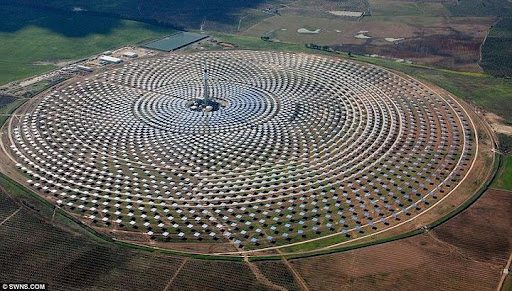The biggest challenge for concentrated solar power (CSP) technologies is getting down the cost curve. But as with wind energy and solar PV that went before it, it’s a classic chicken and egg situation: Without properly constructed incentives to initiate deployment, the technology will struggle to reach the scale that can deliver the anticipated cost reductions.
The IT Power report on CSP technologies – identified as parabolic trough, solar towers, compact linear fresnel reflector, solar dish, concentrated solar PV and fresnel lens – suggest it could take anywhere from six to 18 years for CSP to travel down the cost curve to where it can play a role.
“The revenues available to a potential Australian CSP plant in 2011 fall far short of the cost of building and running it,” it says. “The indicative baseline LCOE of $252 per MWh for a typical 64MWe trough CSP plant, compares to potential earnings of around $120 per MWh in today’s grid-connected markets.”
However, rising energy prices and falling CSP capital costs should close this gap between 2018 and 2030. On the revenue side, real energy values are likely to rise at between 1 per cent and 3 per cent per year through to 2030. Meanwhile, capital costs are expected to fall by 20-50 per cent by 2020, depending on the eventual growth rate and progress ratio.” (See table 9 at bottom of story). However, the report says it is concerned that this is not recognised by the contents of the recent Draft Energy White Paper.
Just as rooftop solar PV creates its own value proposition by being cheaper at the socket than electricity delivered from centralised power stations via the grid, the report notes that CSP can create its own value proposition by being able to deliver dispatchable energy into peaks and other periods when a reliable flow of electricity is required.
So rather than competing with coal-fired generators that can generate electricity at 40/MWh (or even less in the case of brown coal generators), CSP is more likely to compete with peaking gas plants, which are generally only used when the wholesale price of electricity is pushed much higher. The other value proposition is to CSP at the edge of grids (to reduce transmission losses), as a hybrid addition to fossil fuel plants, or in min-grid and remote locations, where the cost of CSP is higher, but so is that of the current alternatives such as diesel or gas.
This table below sets out the current estimates of the levellised cost of electricity for CSP and the gaps with the potential target market. There are two key points here: one is that electricity from CSP will have a higher value because of the time it delivers into the grid; the second is that while storage may slightly increase costs, its electricity value is higher because it is dispatchable. That reduces the gap the technology is aiming to reduce.
To further illustrate that, the report modelled how energy from a CSP system would have been valued over the period from 2005 to 2010, with and without storage. Just delivering in its normal generation times would have earned 50 per cent more than the market average, while being able to deliver dispatchable energy would have delivered two or three times the market average.
The report notes that while the current cost gap for CSP is large and undermines confidence in the sector, it is reasonable to compare the table below with the cost curves of other available technologies. It says the cost curves of more mature renewable technologies such as wind and solar PV will slow and level out in coming decades. So much so, that it predicts the LCOE of CSP with storage will match that of wind by 2025, and be half that of solar PV with batteries. Importantly, available CSP revenue would be more than wind, and similar to a PV system with batteries.
“Accordingly, though CSP is starting further behind, its commercial case will be as strong as any other form of renewable energy within the strategic horizon of this review.”











